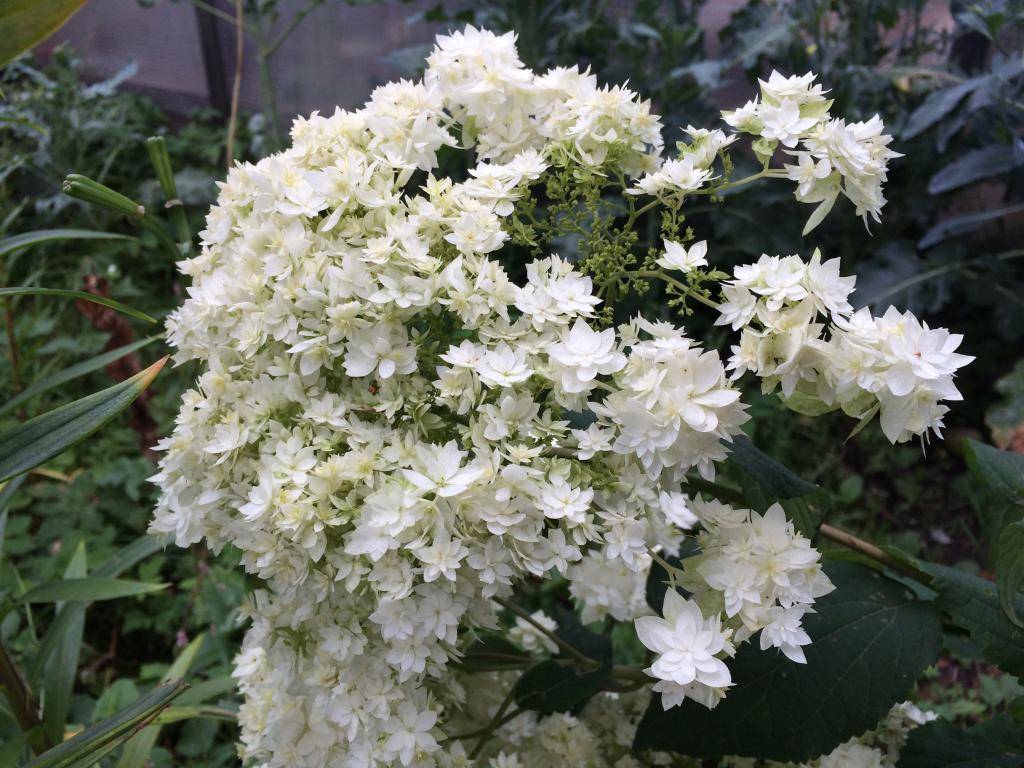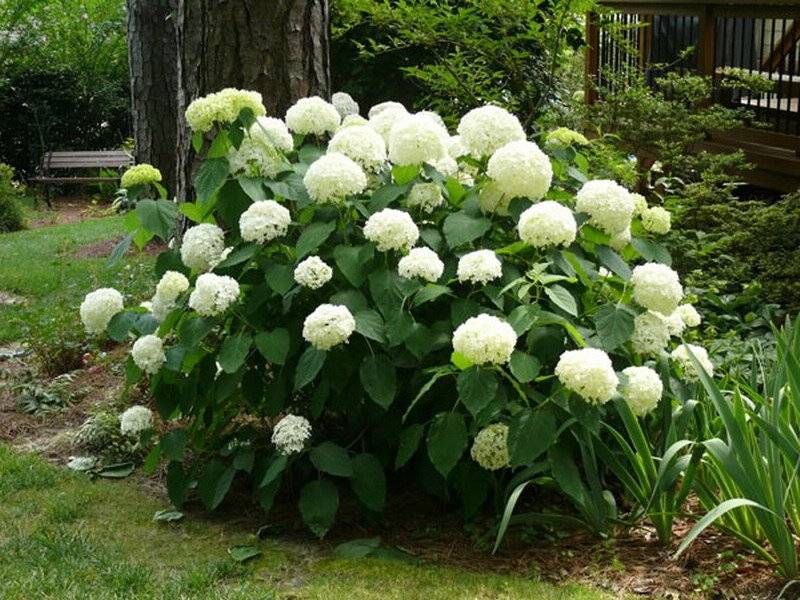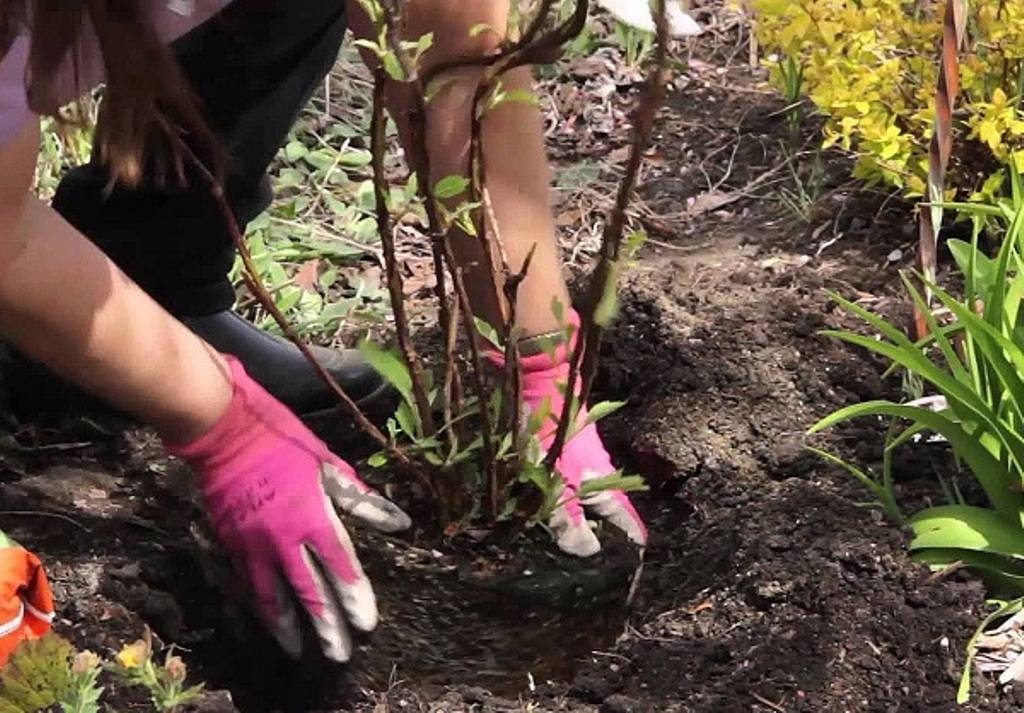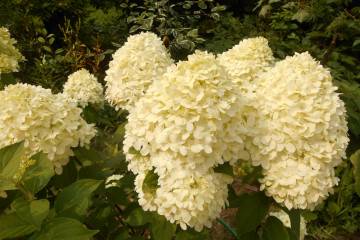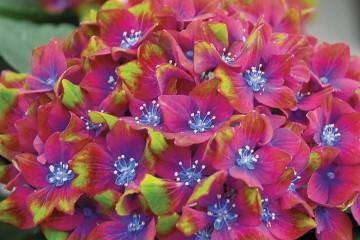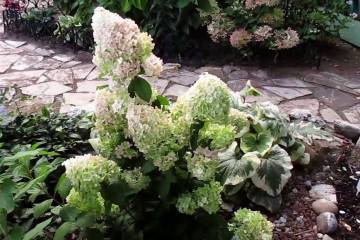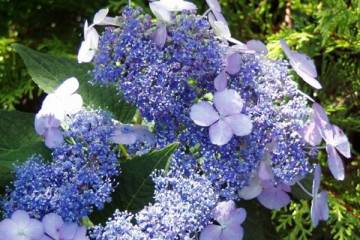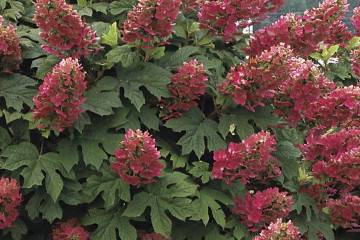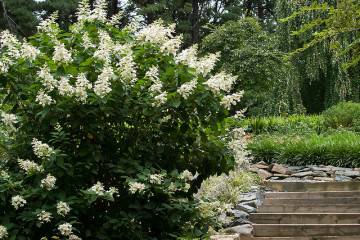Hydrangea Hayes Starburst - variety description, planting and care
Content:
Hydrangea tree (Hydrangea Arborescens) Hayes Starburst is the queen of gardens. No plant can boast of such lush flowering. Throughout the summer and autumn seasons, it is covered with large clusters of double star-shaped buds.
Description of the hydrangea variety Hayes Starburst and its characteristics
Hydrangea Starburst grows up to 3 m. The crown covers an area of up to 1.5 m².
Inflorescence shapes are spherical, hemispherical, pyramidal, flat. In the southern territories, it begins to bloom from the end of May. It continues until the onset of winter.
The culture is hygrophilous, demanding on the composition of the planting soil, while it tolerates excess lime well.
The history of the emergence of the hydrangea variety
Starburst was first described by breeders in North America. Alabama H. Jackson is called the creator of the variety.
It is widespread in the eastern territories of Asia, including Japan and China.
Features of the hydrangea variety
The Starburst variety has beautiful not only flowering brushes, but also leaves. They are large (up to 20 cm long) oval-elliptical. The sheet plate is bordered by a serrated edge. The front part of the leaf is dense green, the inside is pearl gray smooth. Closer to winter, the shade of the foliage changes to light green.
Clusters of inflorescences of different shapes consist of double buds. At the beginning of flowering, a greenish tint of the petals predominates, after a while (3-4 weeks) they become dazzling white (sometimes with barely noticeable greenery). Before frost, the cap of flowers takes on a pink tint.
With the beginning of autumn, seed bolls are formed instead of buds. Some of the seeds are sterile.
Winter hardiness
Hayes Starburst hydrangea is winter hardy. It tolerates frosts down to -35 ° С. On the territory of Russia, it can be cultivated everywhere, except in permafrost regions.
Planting and further care of hydrangea
Starburst can be planted after the return frost has receded, but before the sap flow begins. In areas with a temperate climate, planting is possible in the fall a month before the onset of frost.
Site selection and preparation
The crop achieves optimal conditions under certain conditions, such as:
- loose fertile soil with an acidity of about pH 5.5;
- penumbra;
- protection from cold drafts;
- the depth of the groundwater is at least 1.5-2 m.
How to plant
It is necessary to plant a bush taking into account the dimensions of an adult plant, that is, at a distance of 2-3 m from each other and other plants.
Priority for landing:
- Dig a landing hole 60 × 60 cm in size.
- They mix nutrient soil from garden soil, peat, humus, sand (2: 1: 2: 1). You can add phosphorus and potash fertilizers, 40-50 g per bush.
- Fill the hole with soil mixture to the middle.
- They put a seedling, straightening all the roots.
- The rest of the soil is poured and the root area is tamped.
- A young plant is abundantly watered and mulched (with sawdust, needles, peat, compost).
Watering and feeding
Water the plant abundantly (3-4 buckets per bush) twice a week. Warm water is required at 20-25 ° C.
It is useful to combine watering with weeding and loosening of the root zone.
Two years after planting, the hydrangea does not need feeding. After that, spring application is shown:
- urea (20-25 g per bucket of water);
- superphosphate (30-40 g);
- potassium sulfate (30-35 g);
- nitrogen (20 g per 10 l of water).
Pruning
They begin to form the crown from the fourth season. Usually, two pruning is carried out - spring and autumn. At the first, all damaged, weak shoots are removed. Autumn pruning is cardinal. This time, the bush is thinned out, the one-year-old stems are shortened by 3-5 buds. Every seven years, they carry out a rejuvenating haircut. The branches are cut by 10-15 cm.
Preparing for winter
In most of Russia, only young bushes (up to 4 years old) need shelter. In autumn, they are highly mulched with dry organic matter. In colder areas, cover the plant every year.
Reproduction
You can get a new bush in different ways. It is noteworthy that when propagated by seeds, parental qualities are preserved. True, this method is lengthy. The easiest way to grow a seedling is from a cuttings or by rooting the cuttings. You can also divide an adult bush.
Diseases and pests: means of combating them
This variety is often affected by diseases. The most dangerous of them are:
- powdery mildew. You need to treat with fungicides (foundation, topaz);
- downy mildew. Biofungicides, such as phytosporin, gamair, will help to fight the disease;
- chlorosis. It occurs from a lack of iron, therefore, a solution of ferrous sulfate is used.
Hydrangea also suffers from pest attacks. The most dangerous are spider mites, leaf aphids. Treating the plant with insecticides will help get rid of them. The most commonly used phyto-farm, actellik.
Use in landscape design
Treelike hydrangea is used to decorate gardens, parks, streets. It looks very good against the background of conifers and is a beautiful background for other plants, for example:
- daylilies;
- phlox;
- astilbe;
- geraniums.
The tree hydrangea is undeniably beautiful. At the same time, it cannot be called capricious and difficult to care for. She will delight the owners for many decades with lush and long flowering. Good in single landings, unique in compositions.
